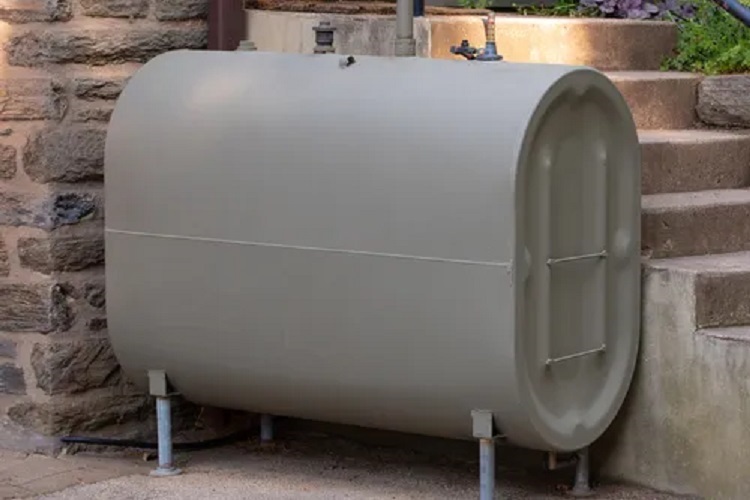Are you considering removing your heating system’s old oil tank and replacing it with a new one?
Replacing your old tank with a newer model ensures your heating system performs optimally and adheres to operational safety standards.
Read here to learn why you should consider oil tank removal, how to do it, and whether refurbishment is a better option.
Table of Contents
Why You Might Need to Remove an Oil Tank
There are several reasons why you might need to remove and dispose of your oil tank:
- Age and condition: Domestic oil tanks typically last up to 25 years. As they age, they can develop cracks, bulges, and rust.
- Safety concerns: Old underground tanks can leak oil into surface and groundwater, leading to costly remedial efforts or legal bills.
- Upgrades: When renovating your home or upgrading your heating system, you may need to install a new oil tank that fully integrates with your new system.
- Space concerns: Many homeowners want to replace their old oil tanks with newer, sleeker, and more space-efficient tanks.
Who Can Remove Oil Tanks
Oil tank removal is not an easy DIY project – it’s best to ask a trained, experienced contractor to take care of the removal process.
Licensed contractors are skilled in eliminating environmental hazards. They also have the necessary equipment to safely and legally remove your current waste oil container and other hazardous waste, such as contaminated oil and sludge.
Many insurance companies also require a professional to manage the oil tank disposal and replacement process.
Is Refurbishment Possible?
Many UK insurance companies prefer that you replace your old, domestic oil tank entirely instead of refurbishing it. Refurbishment can often be costly and lead to a range of regulatory and safety challenges, including:
- Safety risks: The materials used in your existing tank may not meet updated safety standards. Incorporating these outdated materials into an upgraded heating system may lead to structural failures and leaks.
- Cost considerations: Refurbishing and integrating an old oil tank with newer, upgraded heating systems can be expensive. Instead, installing a new heating system and oil tank is generally more affordable and offers installation and maintenance warranties.
- Regulatory compliance: Due to safety and environmental concerns, many municipal by-laws and insurance companies require homeowners to replace their ageing oil tanks rather than refurbish them.
Are There Any Oil Tank Alternatives?
If you decide to have your oil tank removed entirely, consider one of the following alternatives:
- Natural gas: Switching to natural gas for your heating requirements may be more cost-effective and environmentally friendly.
- Electric heating: Electric heat pumps draw heat from the surrounding air and use less energy to heat your home.
- Biomass heating: These eco-friendly heaters use organic material for fuel and help tackle climate change by reducing your environmental impact.
Final Thoughts
Old oil tanks can develop cracks and bulges that lead to oil leakages into surface water and the ground.
However, entrusting a trained professional to replace your old oil tank ensures the tank is removed safely, improving your home’s overall heating system.
Switching to environmentally friendly heating options, such as those powered by natural gas, electricity, or biomass, can help reduce your carbon footprint and energy bills.

